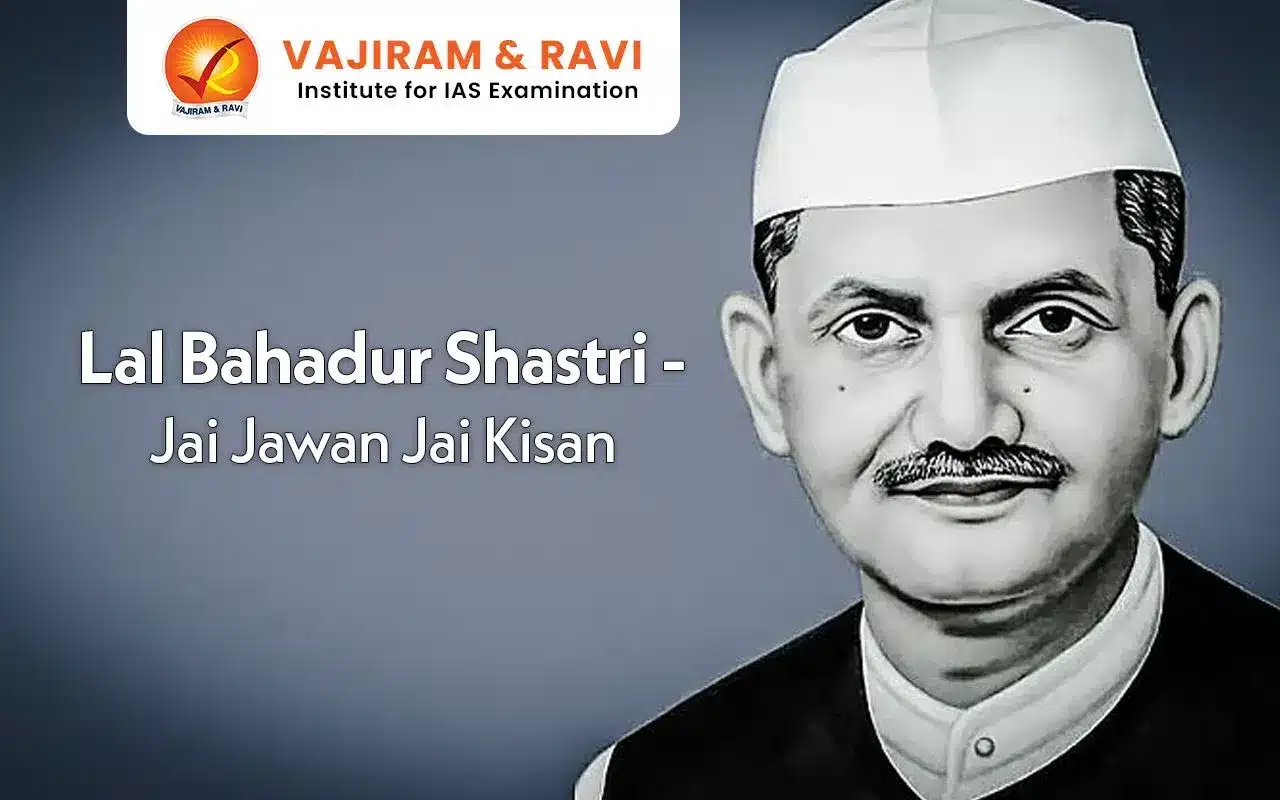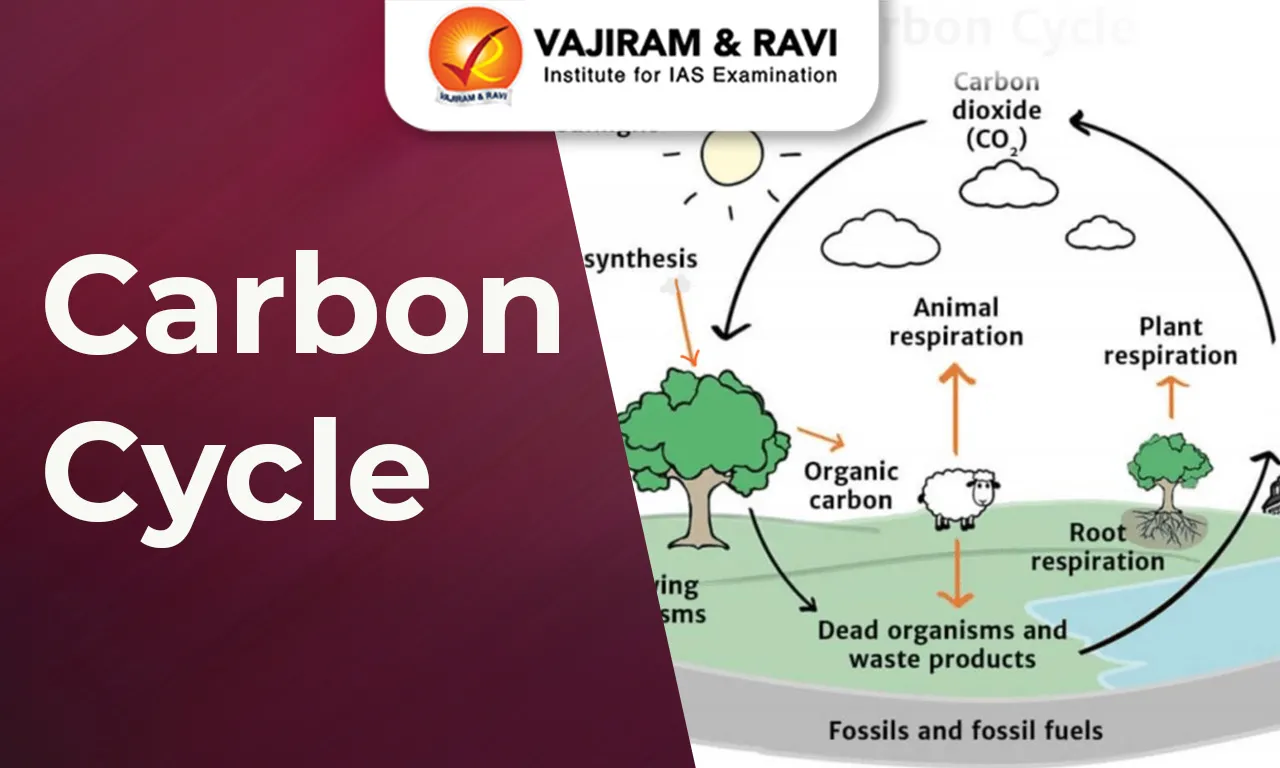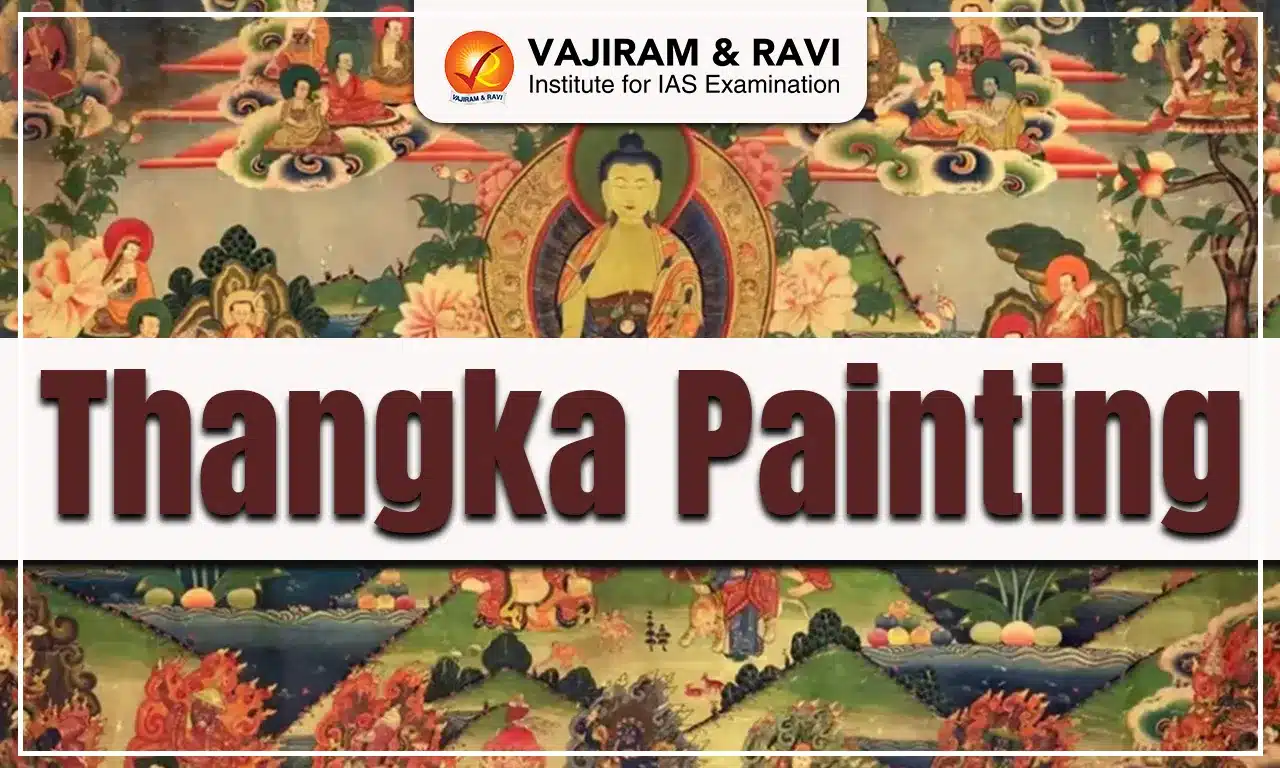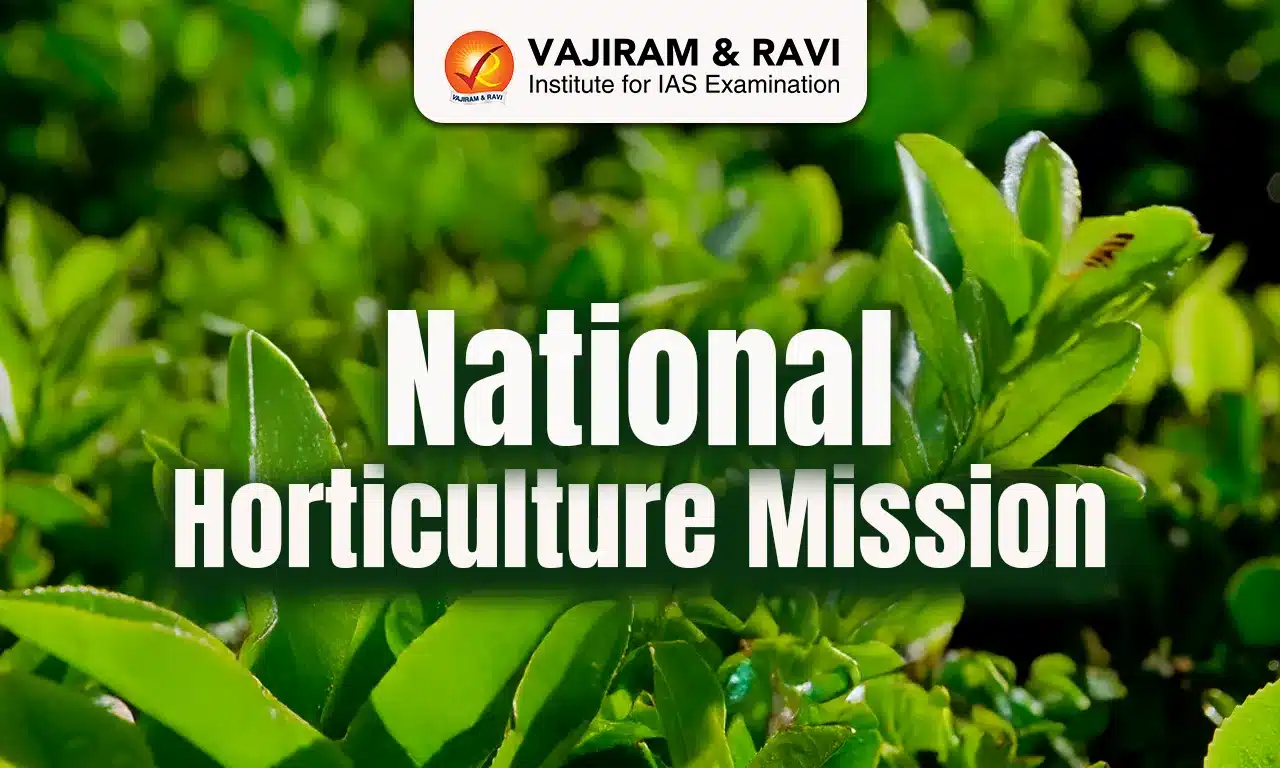Lal Bahadur Shastri was a humble leader who became India’s second Prime Minister (1964-66) after the death of Jawaharlal Nehru. He was a seasoned freedom fighter who had served nine years in prison. Following independence, he held several ministerial and party positions in the Indian National Congress. Apart from being General Secretary of the Congress, he was also responsible for railways, transportation, and commerce.
Among the Shastri era’s long-term legacies were India’s attainment of self-sufficiency in food and India’s defence in the 1965 war. For this, he gave the nation the slogan of ‘Jai Jawan Jai Kisan’ and exhorted the people to make all sacrifices in honour of India.
Rise of Lal Bahadur Shastri
Lal Bahadur Shastri was born in an ordinary family on October 2, 1904, in Uttar Pradesh.
Following his education at Kashi Vidyapeeth, he dedicated his time to social service through the Servants of People Society, founded by Lala Lajpat Rai.
- He was an active participant in the 1930 Civil Disobedience Movement.
- Jawaharlal Nehru appointed him as the General Secretary of Allahabad District Congress Committee in 1930.
- In 1937 he was elected to the legislative assembly of the United Province.
- During the Quit India Movement of 1942, he infuriated the British authorities and was imprisoned several times by the Britishers before Independence.
- After Independence: When India achieved independence in 1947, he became a minister in the state government of Uttar Pradesh.
- He later served in the Union cabinet as a Minister of Railways and Transport (1952-1956), an industry minister (1957-1961), and a home affairs minister (1961-1963).
- He resigned from the Railway Minister post owing to the responsibilities of the Mahbubnagar Rail accident.
- As a Prime Minister of India: Shastriji became the second Prime Minister of India after the death of Jawaharlal Nehru in 1964. He held the office from June 9, 1964, to January 11, 1966.
- Two main events occurred during his tenure as a prime minister – the 1965 war with Pakistan and the Green Revolution in India.
- He came up with the famous slogan “Jai Jawan, Jai Kisan,” aimed to boost the morale of both soldiers and farmers, which were needed at that time.
Lal Bahadur Shastri’s Agricultural Policy
India went through acute food shortages and relied on the 1954 Public Law (PL) 480 agreement with the United States to get food aid under Government agricultural trade development support. When he took office, the agriculture sector was in crisis.
- Food crisis and Indo-Pak war: Between 1960 and 1963, India imported a staggering 15 million tonnes of US grains, and the amount of imports was rising each year.
- The crisis was aggravated by the beginning of the Indo-Pak war in 1965.
- Against this backdrop, the Green Revolution was introduced in India.
- Green Revolution: Shastri brought agriculture to the Planning Commission’s attention at that time. And it was this shift in direction that fueled the Green Revolution in 1965.
- It was under his tenure that the country saw the formation of the Commission for Agricultural Costs and Prices (CACP), ensuring that farmers got the Minimum Support Price (MSP) for their crops.
- His government passed the National Agricultural Products Board Act.
- He also established the Food Corporation of India (FCI) in 1965 under the Food Corporations Act, 1964.
- The introduction of improved irrigation systems and high-yielding crops during his tenure varieties also helped the Green Revolution to succeed.
- White Revolution: He also played a pivotal role in the White Revolution to make India self-reliant in milk production.
- He created the National Dairy Development Board in 1965.
Lal Bahadur Shastri’s Administration
Shastriji established his own Prime Minister’s Secretariat as a source of information and advice to the Prime Minister on policy matters.
- The Secretariat, which came to be known as PMO (Prime Ministers Office), started acquiring a great deal of influence and power in the making and execution of government policies.
- Combating Corruption: He combated corruption through the Central Bureau of Investigation, taking prompt action on the Das Enquiry Report against Punjab Chief Minister Pratap Singh Kairon.
- Foreign policy: Shastri focussed on India’s immediate neighbourhood aimed at improving relations within South Asia.
- Sirimavo-Shastri pact: This agreement was signed between Sirimavo Bandaranaike, the Prime Minister of Sri Lanka, and Lal Bahadur Shastri in 1964. According to the Agreement, all people of Indian origin in Ceylon (Sri Lanka’s old name) who have not been accepted as Ceylonese or Indian citizens should become citizens of either country.
- Relations with Burma: India’s relationship with Burma had been strained after the 1962 Military coup followed by the repatriation of many Indian families in 1964 by Burma. In December 1965, Lal Bahadur Shastri paid an official visit to Rangoon, Burma, and reestablished friendly relations with the country’s military government, led by General Ne Win.
India-Pakistan War 1965
The 1965 Indo-Pak Warwas the second conflict between these two neighbouring countries after 1947. This was the attempt by Pakistan to annex Jammu and Kashmir by any means.
- While India was still recovering from the damages of the Sino-India war of 1962, Pakistan saw it as an opportunity to acquire Jammu and Kashmir with might, presuming India to be weak in terms of defence preparation.
- Operation Desert Hawk:On 24 April 1965, the Pakistan Army attacked the Rann of Kutch in Gujarat and penetrated six to eight miles inside the Indian territory.
- Pakistan conducted Operation Desert Hawk, seizing several Indian posts along the Kanjarkot Fort border area.
- Kutch Agreement: However, as a result of United Kingdom mediation, Pakistani forces withdrew from Indian territory in the Kutch sector.
- India consented to the ceasefire to improve mutual ties and delimit the border in this area peacefully.
- The ‘Kutch Agreement’ was signed on July 1, 1965. Pakistanis mistook India’s restraint and maturity as weakness.
- Operation Gibraltar: Operation Gibraltar was intended to infiltrate forces into Jammu and Kashmir, sparking an insurgency against Indian rule. This became the immediate cause of the 1965 war.
- In August 1965, Pakistani soldiers dressed as tribesmen infiltrated Jammu and Kashmir to join a rally in Srinagar to commemorate Saint Pir Dastgir.
- However, the plan failed with their early detection and lack of support from the locals, who gave away their positions.
- Pakistan used its artillery in support of guerrilla operations out of sheer desperation. India responded immediately, recapturing the Kargil Heights, which had been returned in July 1965.
- By the end of August 1965, Pakistan’s plans for rapid annexation of the Valley had been decisively defeated.
- Operation Grand Slam: Following the failure of Operation Gibraltar, General Ayub Khan launched Operation Grand Slam on September 1, 1965.
- A massive attack was planned in the Chamb Jaurian Sector aimed at capturing Akhnoor and cutting off Indian positions in Naushera, Rajouri and Punch.
- The Emergency Committee of the Cabinet, chaired by Prime Minister Lal Bahadur Shastri, gave the ‘go-ahead’ for an all-out military response on September 3, 1965.
- The Indian strategy was to threaten Lahore and Sialkot, relieving pressure in the Chamb-Jaurian Sector while also degrading Pakistani armed potential and capturing some territory for bargaining in post-war negotiations.
Tashkent Agreement
Hostilities between the two countries ended when a cease-fire was declared by UN Security Council Resolution 211, following diplomatic intervention by the Soviet Union and the United States and the subsequent issuance of the Tashkent Declaration.
- The Tashkent Agreement was signed on 10 January 1966 between Prime Minister Lal Bahadur Shastri and Pakistani President General Ayub Khan, agreeing to observe the Cease Fire Line as it existed before 05 August 1965.
- The Prime Minister of India and the President of Pakistan have committed to make every effort to promote good neighbourly relations in conformity with the United Nations Charter.
- Key points:
- All armed personnel of the two countries shall be withdrawn not later than 25 February 1966 to the positions they held before 5 August 1965, and both sides must adhere to the cease-fire terms on the cease-fire line.
- Relations between India and Pakistan must be founded on the principle of non-interference in each other’s internal affairs.
- The High Commissioner of India to Pakistan and the High Commissioner of Pakistan to India will return to their posts, and the normal functioning of the diplomatic missions of both countries will be restored.
- Both governments must abide by the 1961 Vienna Conventionon Diplomatic Relations.
- To consider measures to restore economic and trade relations, as well as communications.
- They give their respective authorities orders to carry out the repatriation of prisoners of war.
- Continue the discussion of issues concerning refugees and evictions/illegal immigration.
End of the Shastri Era
Lal Bahadur Shastri died on the night of January 10/11, 1966, in the city of Tashkent, hours after signing a peace agreement.
- The cause of death was reported as cardiac arrest, but it remains a mystery, as there are many conspiracy theories about his death.
- He received the highest civilian award, Bharat Ratna, posthumously in 1966.
Lal Bahadur Shastri- Jai Jawan Jai Kisan PYQs
Question 1: Analyse the circumstances that led to the Tashkent Agreement in 1966. Discuss the highlights of the Agreement. (UPSC Mains 2016)
Question 2: Write a critical note on the evolution and significance of the slogan, ‘Jai Jawan Jai Kisan’. (UPSC Mains 2013)
Last updated on May, 2025
→ UPSC Notification 2025 was released on 22nd January 2025.
→ UPSC Calendar 2026 is released on 15th May, 2025.
→ The UPSC Vacancy 2025 were released 1129, out of which 979 were for UPSC CSE and remaining 150 are for UPSC IFoS.
→ UPSC Admit Card 2025 is released now for CSE Prelims Exam 2025.
→ The UPSC Prelims 2025 is scheduled to be conducted on 25th May 2025 and UPSC Mains 2025 will be conducted on 22nd August 2025.
→ Apply once through it and aspirants can apply for various government exams conducted by UPSC.
→ The UPSC Selection Process is of 3 stages-Prelims, Mains and Interview.
→ UPSC Result 2024 is released with latest UPSC Marksheet 2024. Check Now!
→ UPSC Toppers List 2024 is released now. Shakti Dubey is UPSC AIR 1 2024 Topper.
→ Also check Best IAS Coaching in Delhi
Lal Bahadur Shastri- Jai Jawan Jai Kisan FAQs
Q1. Who raised the slogan Jai Kisan Jai Jawan?+
Q2. What is the mystery of Shastri's death?+
Q3. What is the Shastri formula?+
Q4. When was the Tashkent agreement signed?+
Q5. What was the role of Lal Bahadur Shastri in the freedom struggle?+
Tags: lal bahadur shastri quest

















